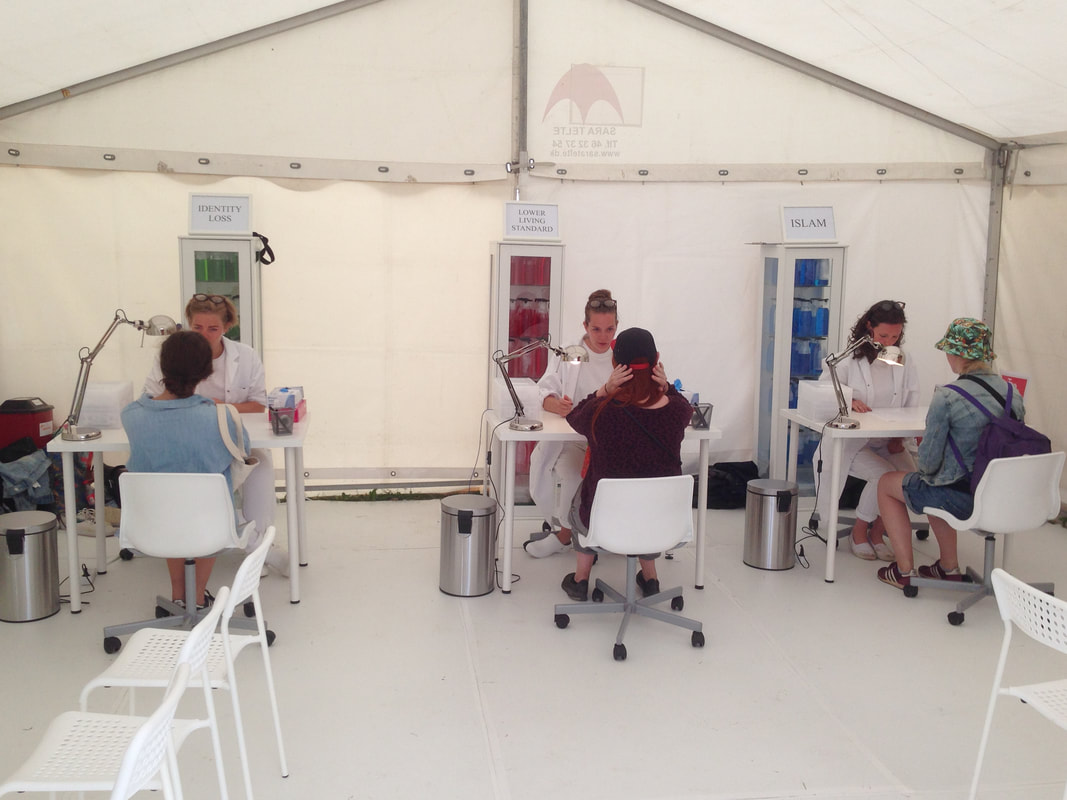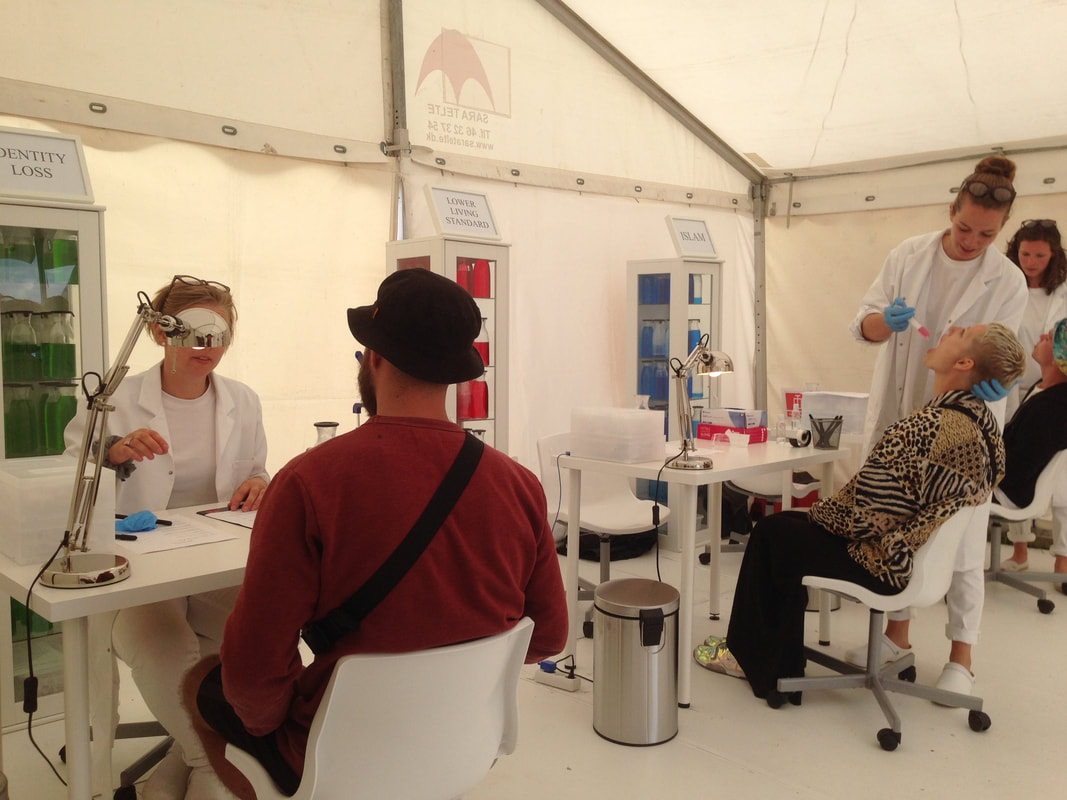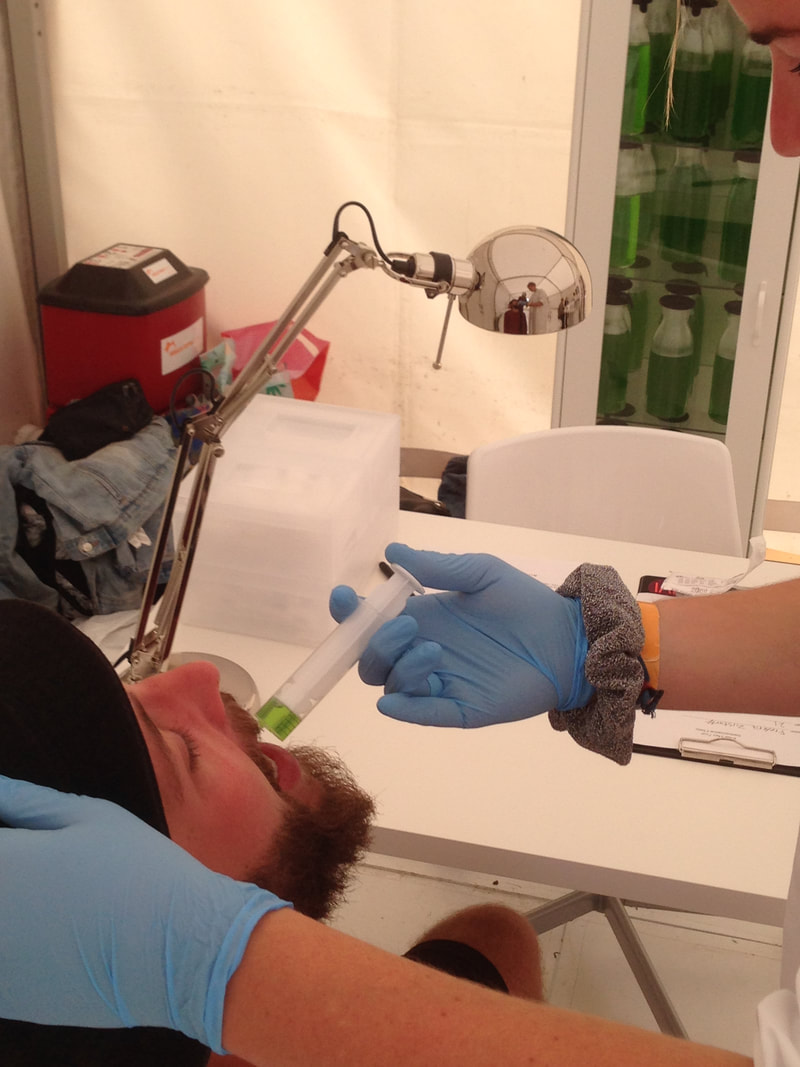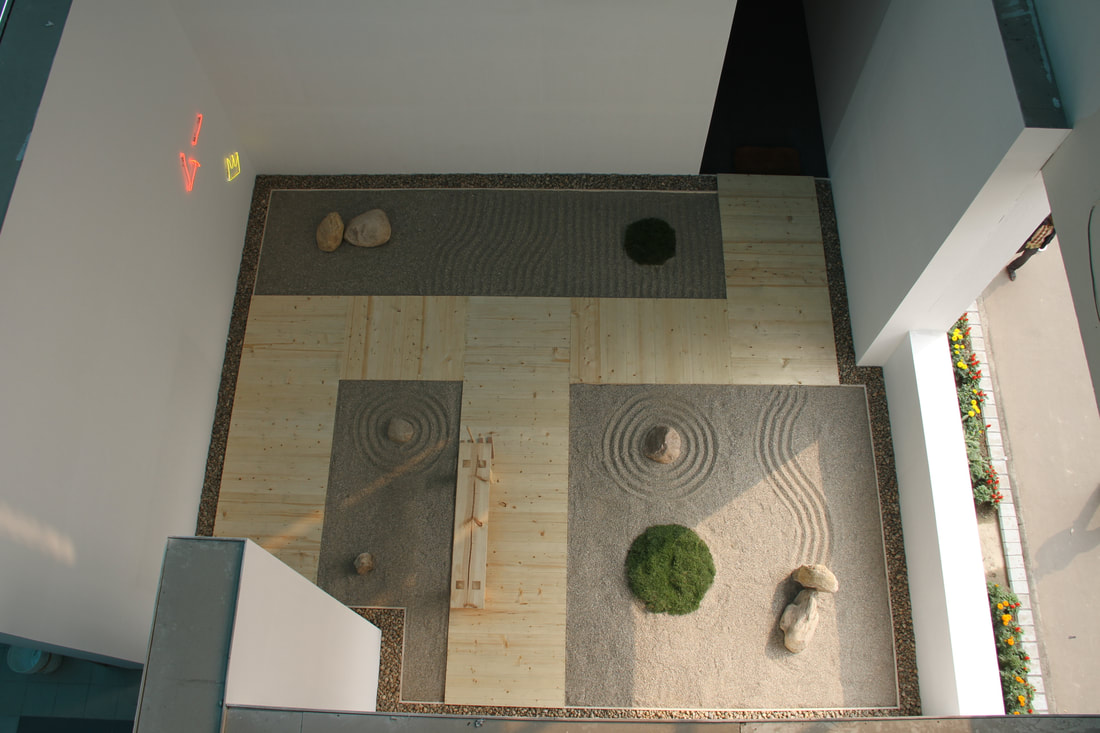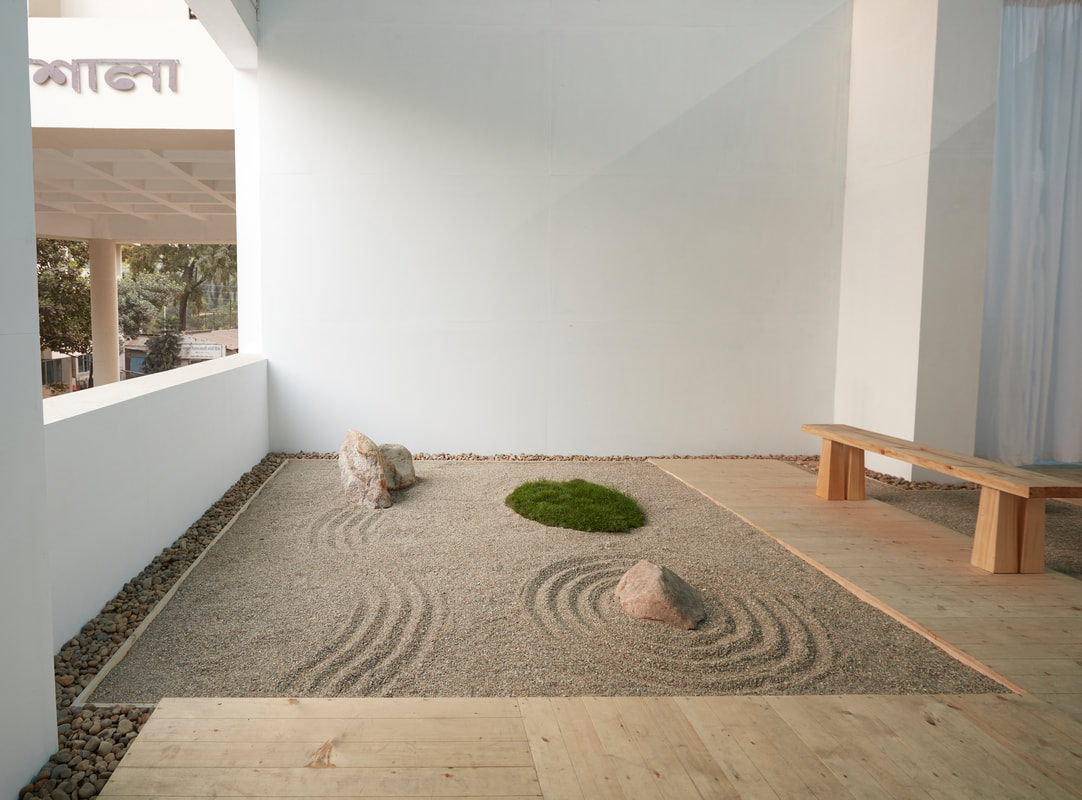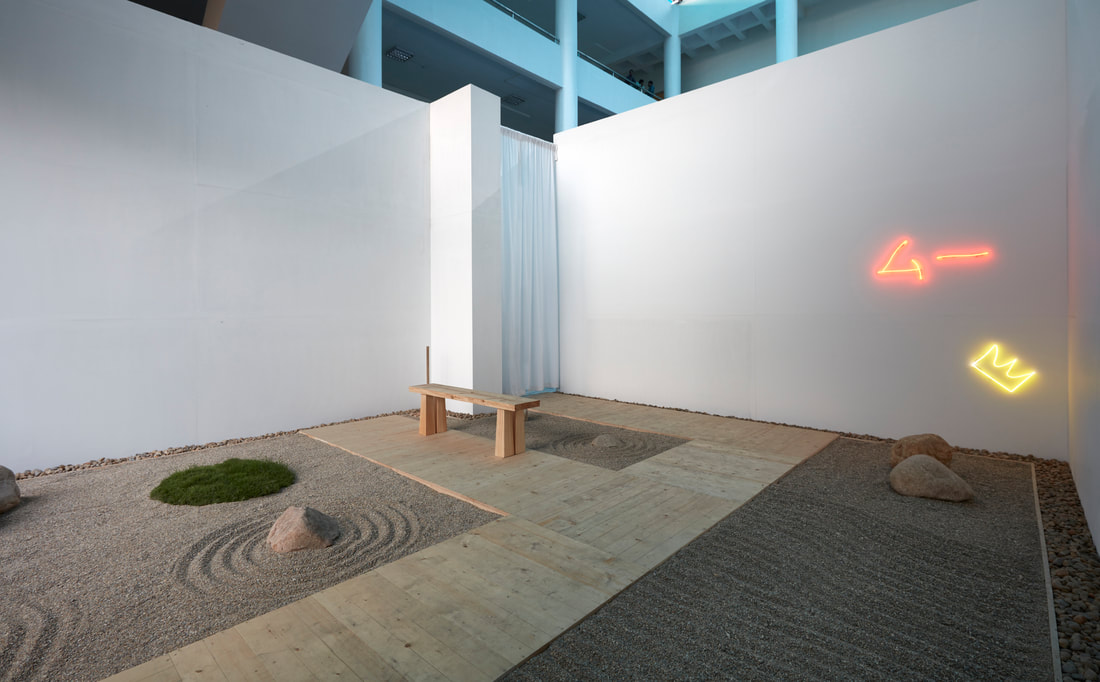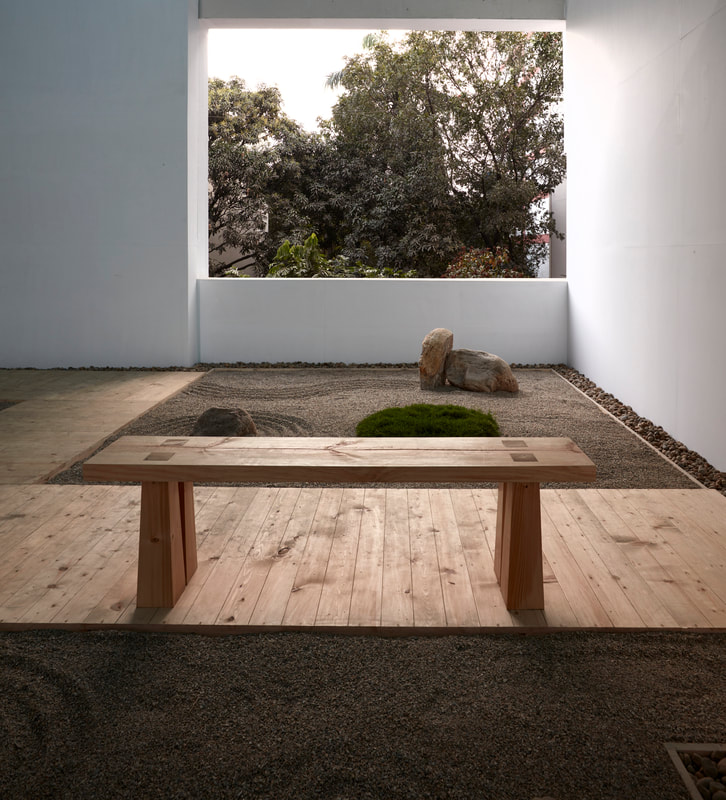Cultural Artist - Conceptual Anthropologist
What They Fear, 2016
Site-Specific Performative Installation
Images Biennale, An Age of Our Own Making, Commission
Roskilde, Danmark
The far-right government of Denmark has taken a strong, once should call racist, stance towards the wave of migrants arriving in Europe, largely from Syria, Afghanistan, Iraq, Sudan, Eritrea, etc. The idea for this work relates to this crisis of migration that Europe, in this case Denmark, has responded to in different ways; and which can be seen as rooted in the notion of Immunisation - What (and in this case WHO) do we choose to immunize ourselves against? And what is it that we seek to be immunized from - ideas? religions? races? nationalisms? extremisms? political ideologies? open borders?
What They Fear was an “immunisation clinic,” performed in collaboration with medical students from the Roskilde Medical University, where "vaccines" were made available so that visitors could be immunised against one or more of the three fears, as expressed by Danes through a survey on the arrival of migrants into Denmark - Islam, Lower Standard of Living, and a Loss of Danish Identity.
Site-Specific Performative Installation
Images Biennale, An Age of Our Own Making, Commission
Roskilde, Danmark
The far-right government of Denmark has taken a strong, once should call racist, stance towards the wave of migrants arriving in Europe, largely from Syria, Afghanistan, Iraq, Sudan, Eritrea, etc. The idea for this work relates to this crisis of migration that Europe, in this case Denmark, has responded to in different ways; and which can be seen as rooted in the notion of Immunisation - What (and in this case WHO) do we choose to immunize ourselves against? And what is it that we seek to be immunized from - ideas? religions? races? nationalisms? extremisms? political ideologies? open borders?
What They Fear was an “immunisation clinic,” performed in collaboration with medical students from the Roskilde Medical University, where "vaccines" were made available so that visitors could be immunised against one or more of the three fears, as expressed by Danes through a survey on the arrival of migrants into Denmark - Islam, Lower Standard of Living, and a Loss of Danish Identity.
Untitled Garden #1, 2016
Mixed-Media Installation
3rd Dhaka Art Summit (DAS), Commission
Dhaka, Bangladesh
Untitled Garden #1 opens up a space to think about the role misunderstandings play in shaping history and the way we view our place in the world. Neon Katakana Japanese characters in this garden spell the word Mu, referring to a state of “nothingness” or “nonbeing” in Zen Buddhism. Mu, however, is also the name of what several pseudoscientists believed was the lost continent and civilization of Mu, a white race civilization that fell into the ocean but whose descendants were believed to have formed the great early cultures around the world. The neon crown in the garden refers to a sacred symbol of this imagined lost Kingdom of Mu, representing "The Lands of the West." In this work, the Japanese definition of Mu is a place with an absence of desire, while the second symbol of Mu illustrates what happens with the human desire to explain what they cannot understand. The Zen Garden explores the hidden dangers of how Eurocentric institutions present themselves as “discoverers” of art from conflicted/developing countries, and creates parallels between the colonial anthropologist discovering the noble savage in exotic lands and the Western curator discovering the noble artist in equally exotic locales.
